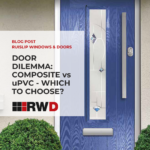Composite Fire Doors: safety, security and fire protection all in one. 
A composite fire door is visually very similar to a standard composite door but with the added protection of specific fireproof materials. Controlled and exacting manufacturing standards coupled with rigorous third party testing* for fire doors not only demonstrates integrity against fire but also delivers performance relative to smoke control, security, weather, sound insulation and […]



